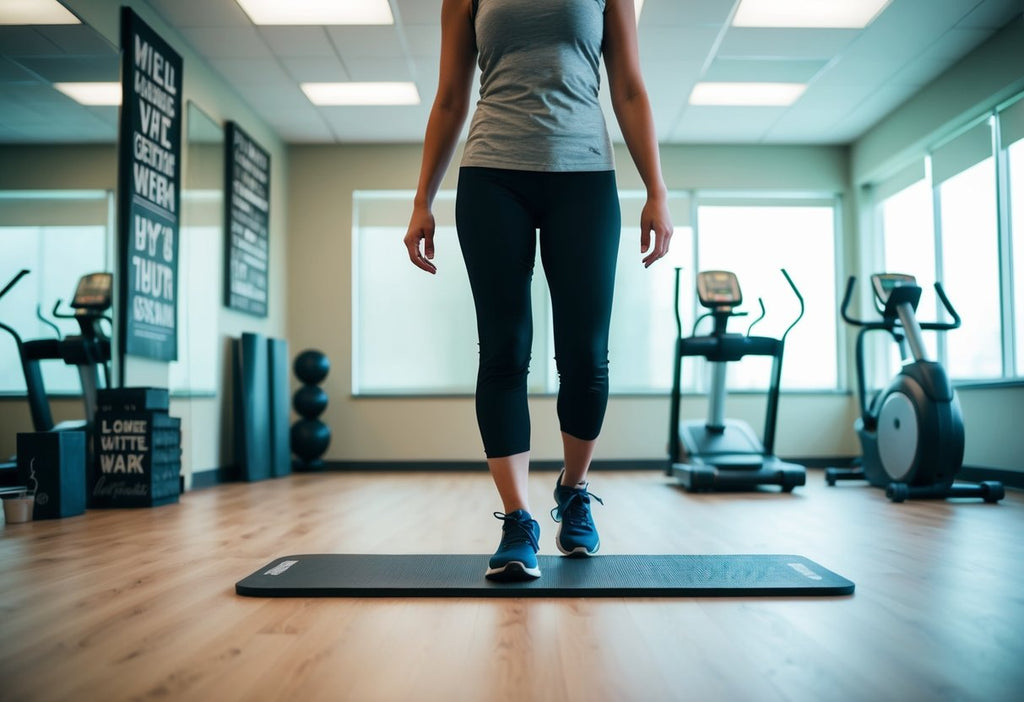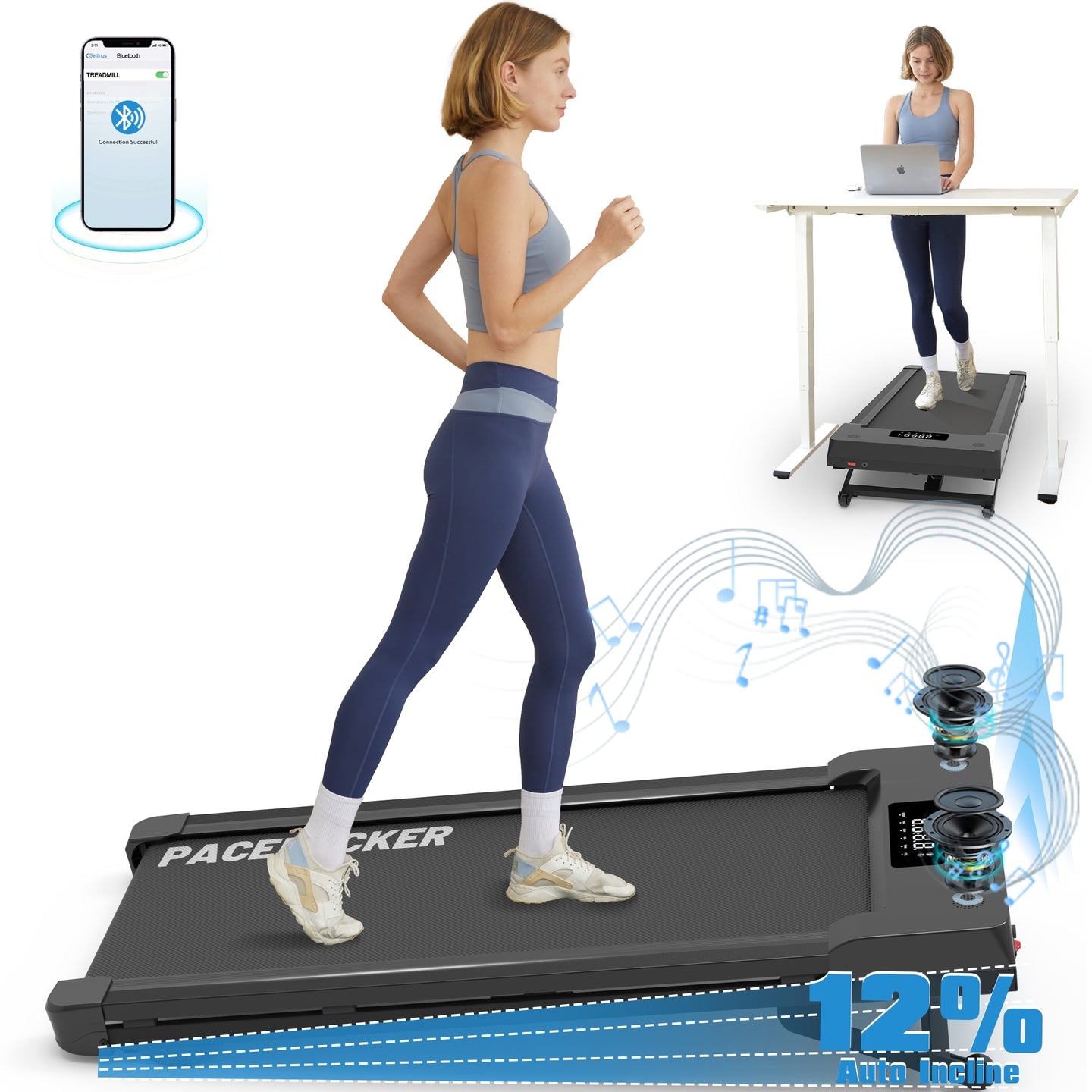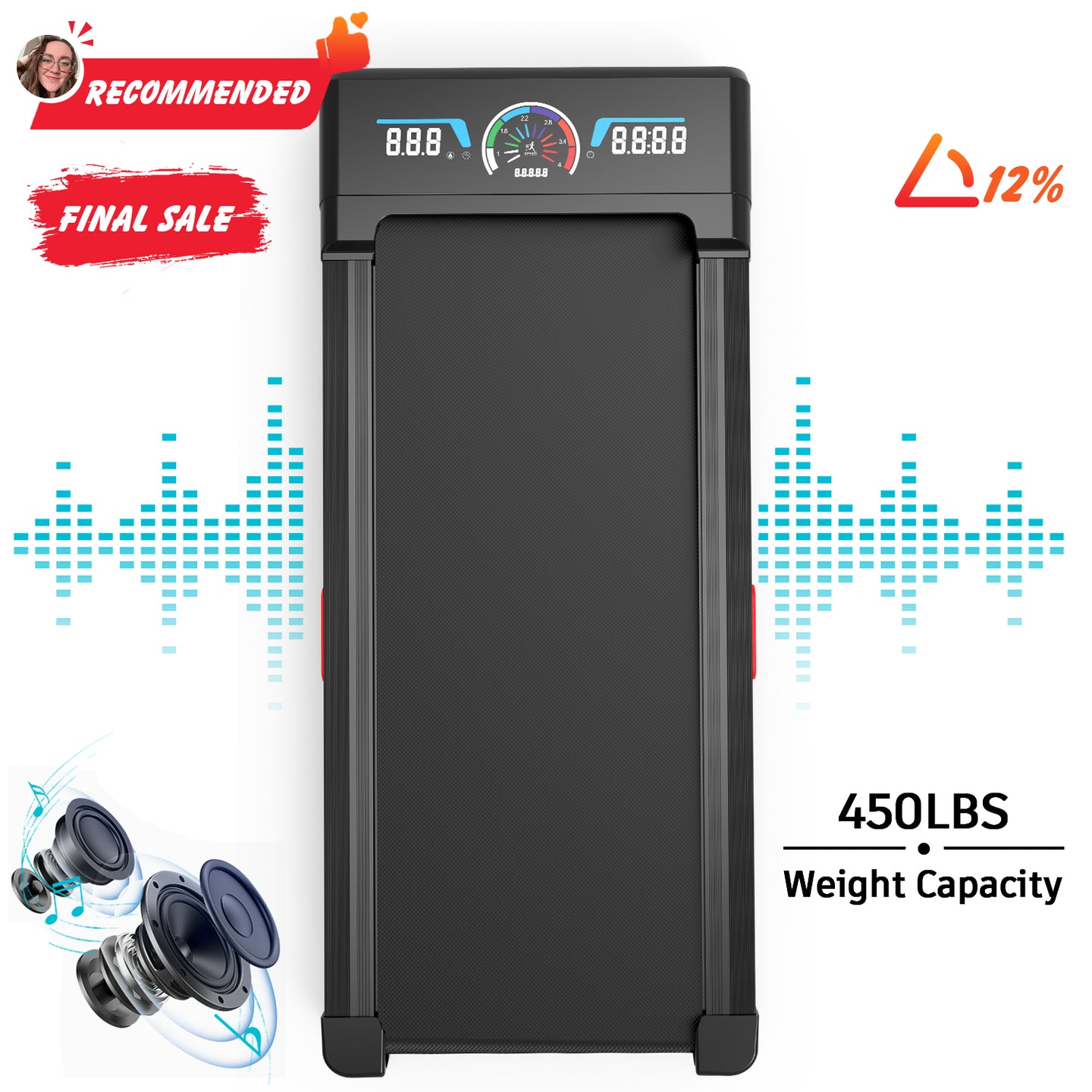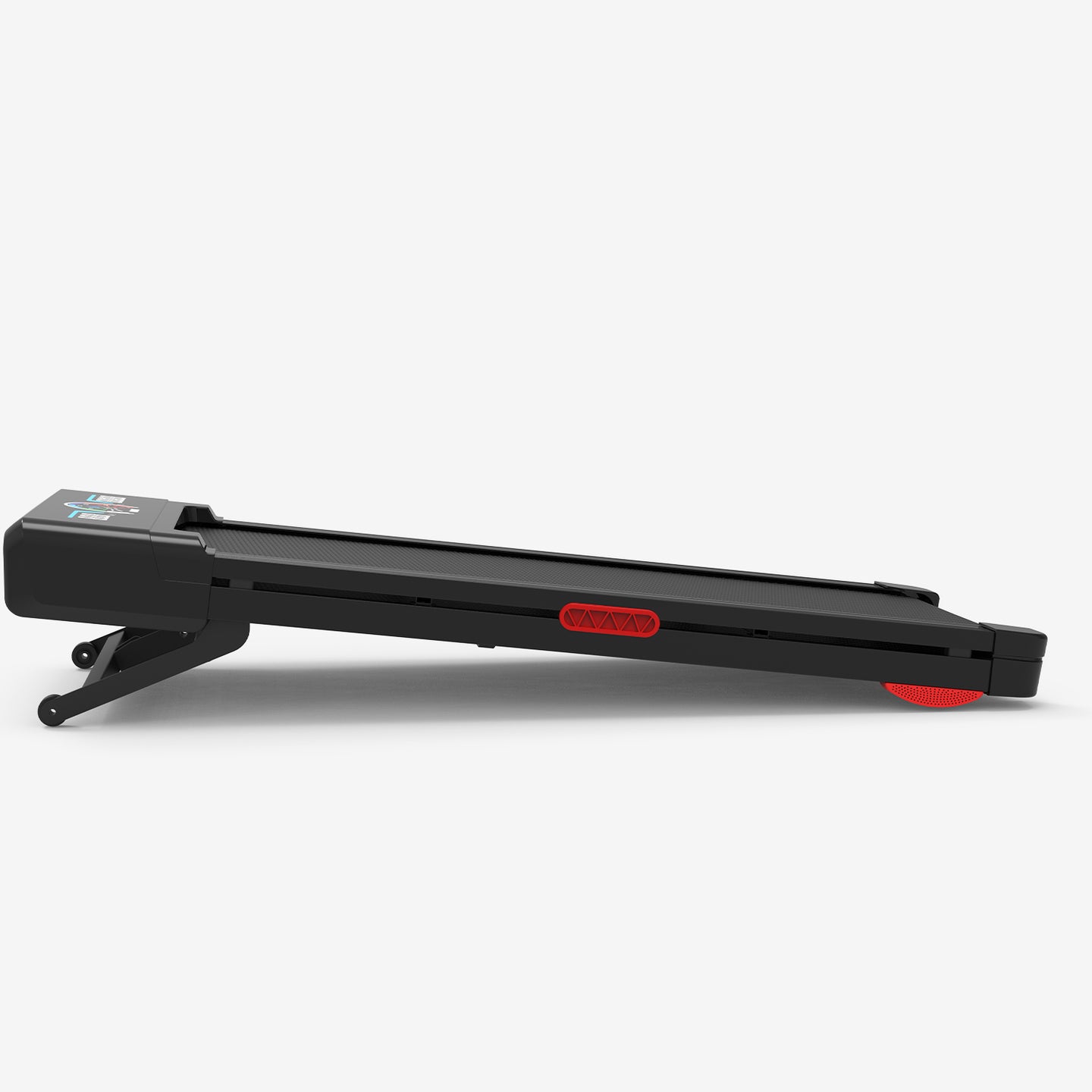When Were Treadmills Invented
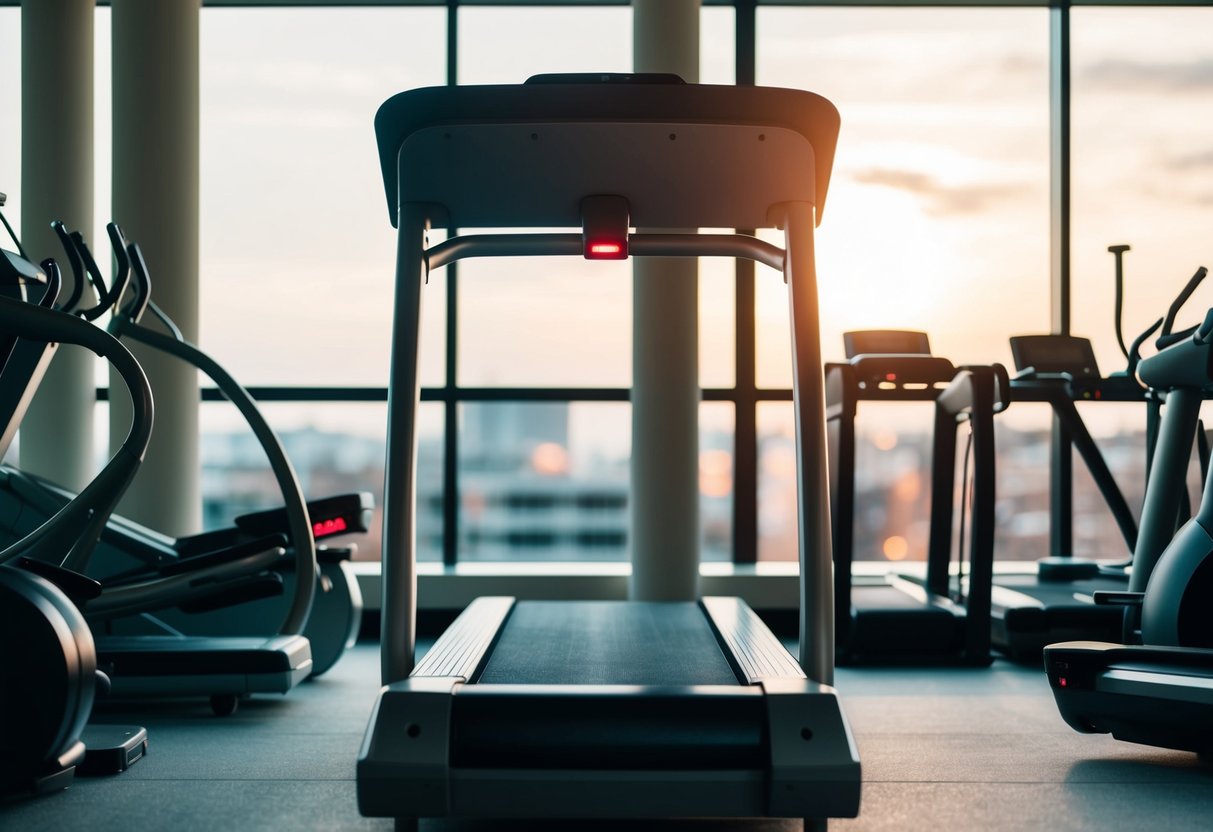
Don’t forget to check out our Pacerocker, Trailviber, and Trailviber Auto Incline walking pad treadmills.
The treadmill is a staple in gyms and homes worldwide, but many don't know its interesting history. The modern treadmill was originally invented in 1818 by engineer Sir William Cubitt as a punishment device in prisons. Prisoners would walk on a large wheel, and their labor was used to grind grain or pump water.
Over the years, treadmills transformed from tools of punishment to vital pieces of fitness equipment. In the 1960s, they gained popularity for medical testing and diagnostics. Advances in design and technology finally made them appealing for home and gym use.
Today, treadmills are celebrated for their benefits to cardiovascular health and endurance. Various models cater to different fitness needs, offering features like adjustable inclines and preprogrammed workouts. As we pursue a healthy lifestyle, treadmills remain one of our most reliable exercise machines.
Key Takeaways
- Early treadmills were used in prisons in the 1800s.
- Treadmills evolved into essential fitness equipment.
- Modern treadmills offer diverse features for health.
Origins of the Treadmill
The story of treadmills is fascinating, stretching from ancient times to innovative uses in prisons. Let's explore how they transformed from tools for labor into modern fitness equipment.
From Ancient Treadwheels to Prison Labor
We can trace the early roots of the treadmill back to ancient treadwheels. These were large wheel-like contraptions used primarily for lifting heavy objects or to pull water. The Romans famously used treadwheel cranes for construction, employing manual power to achieve great feats.
In the 19th century, treadmills became a part of the prison system. Known as "prison treadmills," these devices were designed as a form of punishing labor. Prisoners walked on the continuous wheel to grind grain or pump water, turning the simple wheel into a hard labor machine.
The Role of Sir William Cubitt
Sir William Cubitt played a significant role in redefining the treadmill's purpose. He is known for inventing an improved version of the treadmill in 1818. Cubitt's creation became widely used in British prisons, where prisoners had to step on a series of spokes to power the mechanism.
Cubitt saw the device as a way to use prisoner labor effectively and provide a workout of sorts. This invention laid the groundwork for what would become a staple in gyms worldwide. Today, while running on a treadmill might not connect directly to its punishing past, the basic design elements remain the same.
Medical and Research Advancements
Medical treadmills have been vital in advancing how we examine and understand heart conditions. Innovations by individuals like Dr. Robert Bruce and Wayne Quinton have improved stress testing methods, enabling better analysis of heart rate and ECG responses.
Dr. Robert Bruce and the Bruce Protocol
Dr. Robert Bruce developed the Bruce Protocol, a pioneering method in stress testing that uses treadmills to diagnose heart conditions. This procedure involves increasing treadmill speed and incline in stages while monitoring the heart's response through ECG.
The idea is simple yet brilliant: gradually increase the workload on the heart and watch how it performs. This method has become a standard in cardiac assessment. By observing the changes in heart rate and ECG readings, healthcare providers can identify potential issues with blood flow, artery blockages, and other heart problems.
His work has allowed for early detection and treatment of heart-related issues, improving patient outcomes significantly. This innovation helped pave the way for more sophisticated treadmill tests in medical settings.
Wayne Quinton's Innovations
Wayne Quinton played a crucial role in designing medical treadmills, enhancing their application in both research and clinical settings. He worked alongside Dr. Robert Bruce, helping to refine the treadmill used for the Bruce Protocol. Quinton's contributions focused on making treadmills more precise and reliable for medical stress tests.
His designs addressed the specific needs of patients undergoing stress tests, ensuring accurate and reproducible results. This has allowed for more consistent data collection, which is crucial for diagnosing and treating heart conditions.
By making these machines more accessible and efficient, Quinton's innovations have expanded their use beyond just hospitals. Today, they offer a dependable way for medical professionals to assess and manage heart diseases.
Evolution into Fitness Equipment
Treadmills have become a key part of the fitness world. Their journey from manual devices to modern, motorized machines shows how the fitness industry has embraced innovation. Let's explore how home treadmills became popular and the key technological developments in design over the years.
The Inception of Home Treadmills
In the late 1960s, home treadmills began to take shape. The Pacemaster 600, the first home exercise treadmill, was a pivotal product. It made workouts more accessible to everyone from the comfort of their own home. We saw a shift towards exercise convenience, sparking a revolution in home fitness.
Manual treadmills were the first to emerge, requiring users to power the belt with their strides. This simplicity offered advantages by eliminating the need for electricity, making it more affordable for many. Gradually, people wanted more from their workouts, pushing for enhancements in treadmill design.
Technological Milestones in Treadmill Design
The introduction of the motorized treadmill marked a milestone in treadmill technology. An electric motor allowed users to set specific speeds and inclines, enhancing workout customization. As the fitness industry expanded, so did treadmill technology and design.
Modern treadmills now come with digital displays, heart rate monitors, and even internet connectivity. These features have elevated our exercise experience, offering personalized programs and tracking capabilities. Thus, the treadmill transformed from a simple manual device into a piece of cutting-edge fitness technology, continually evolving to meet the needs of health enthusiasts worldwide.
Treadmills and Health
Using treadmills can be a great way to improve heart health and aid recovery after injuries. By integrating these machines into our fitness routines, we can enhance cardiovascular function and support rehabilitation efforts effectively.
Cardiovascular Health and Rehabilitation
Treadmills are excellent tools for cardio workouts. Regular running or walking sessions help to strengthen the heart. As we increase our heart rates, we can improve blood circulation and endurance.
For those recovering from injuries, treadmills offer a controlled environment. Doctors often recommend them for gradual physical therapy. We can adjust speed and incline, making treadmills versatile for different rehabilitation stages. They help us safely regain strength without risking further harm.
The Impact of Aerobic Exercise on Heart Health
Aerobic exercises, like those performed on treadmills, play a key role in maintaining heart health. By engaging in regular sessions, we can lower risks associated with heart disease. Running or brisk walking helps us manage weight and improve our body’s oxygen use.
Fitness equipment, such as treadmills, provides a consistent way to include aerobic exercises in our routines. Consistent use can boost overall stamina and energy levels. This regular exercise contributes to a healthier lifestyle and improved cardiovascular well-being.
Innovative Treadmill Features and Types
Treadmills have evolved with unique innovations. We see workplace options and specialized designs for health and performance, each offering benefits for different needs.
Desk and Workplace Treadmills
Desk treadmills are perfect for those of us looking to stay active while working. We can walk at a pace that suits us while tackling emails or phone calls. These treadmills are typically quiet and compact, allowing them to fit easily in home offices.
Treadmill desks often come with adjustable heights and safety features. Some include digital displays that track our steps and calories burned, motivating us to keep moving throughout our workday. Under-desk treadmills are another option, enabling us to use our existing desks.
Adding movement to our day can help improve mood and productivity. It's a simple way to incorporate more exercise into busy schedules without leaving our workspace.
Specialized Treadmills for Medical and Athletic Use
Specialized treadmills cater to those with specific physical needs. Anti-gravity treadmills are a game-changer in medical and athletic fields. We can adjust the level of weight-bearing to aid recovery or enhance training.
Underwater treadmills use hydrotherapy to reduce joint strain, making them ideal for rehab. The water provides resistance, helping us build strength and endurance safely.
For those interested in tech, virtual reality treadmills create interactive environments. We experience varied terrains and settings, adding excitement to our workouts. These innovations take training to a new level, emphasizing safety, rehabilitation, and engagement for different user needs.
Treadmills in Popular Culture and Consumer Market
Treadmills have become essential in our fitness routines and entertainment media. They've evolved beyond basic exercise equipment into interactive machines that enhance workouts with technology.
The Best Treadmills for Home Use
We've seen a vast array of treadmills hit the market, each promising to be the "best treadmill" for home use. Popular brands like Life Fitness offer reliable and sturdy machines tailored for both running and walking.
Some top models come with features such as adjustable inclines and speed profiles, catering to a wide range of fitness levels. These machines often include a variety of workout programs that keep us motivated and challenged, ensuring that our fitness goals are always within reach.
Integration with Fitness Apps and Virtual Challenges
Technology has brought treadmills into the digital age, making our workouts more engaging. Integration with fitness apps allows us to track progress and set personalized goals. We can sync our treadmill activity with apps that offer virtual running trails or even participate in digital marathons.
There's a certain thrill in joining virtual challenges, competing against others, or striving to beat our own records. This tech-powered experience keeps us inspired, especially for those who enjoy a bit of competition or need extra encouragement to push through their workouts.
Future Trends in Treadmill Design and Use
As innovation continues, treadmills are getting more advanced with tech-rich features. They play an important role in current fitness trends, enhancing workouts and fitness plans.
Advances in Treadmill Technology and User Experience
Treadmills are evolving with smart technology. Many now connect to smartphones and fitness apps, making tracking progress easier. Future designs might feature virtual reality to create more engaging workouts. Imagine running on a beach or through a forest from your home!
Techs like conveyor belts and flywheels are being improved for a smoother, quieter run. Some machines offer a cardio mode to adjust intensity levels. Users can expect more personalized experiences with tailored exercise plans. Interactive screens can put us in control of pace, incline, or scenery.
The Role of Treadmills in Evolving Fitness Paradigms
Treadmills are important in modern fitness approaches. They're becoming more than just moving platforms. We use them for cardio, strength, and even cross-training. Their versatility lets us mix up workouts.
Fitness enthusiasts see them as vital exercise equipment. With features like interval training and heart rate monitoring, treadmills adapt to diverse needs. Horse treadmill concepts inspire some designs, ensuring adaptability for different user requirements.
When did the modern electric treadmill emerge in the fitness scene?
The modern electric treadmill arrived in the late 1960s and early 1970s. These machines offered adjustable speeds and inclines. This technology made exercising more efficient and customizable. Today, we enjoy improved designs and features crafted over decades.
Discover the fascinating history of the treadmill, invented in 1818 as a prison punishment device and evolved into essential fitness equipment for health benefits.


